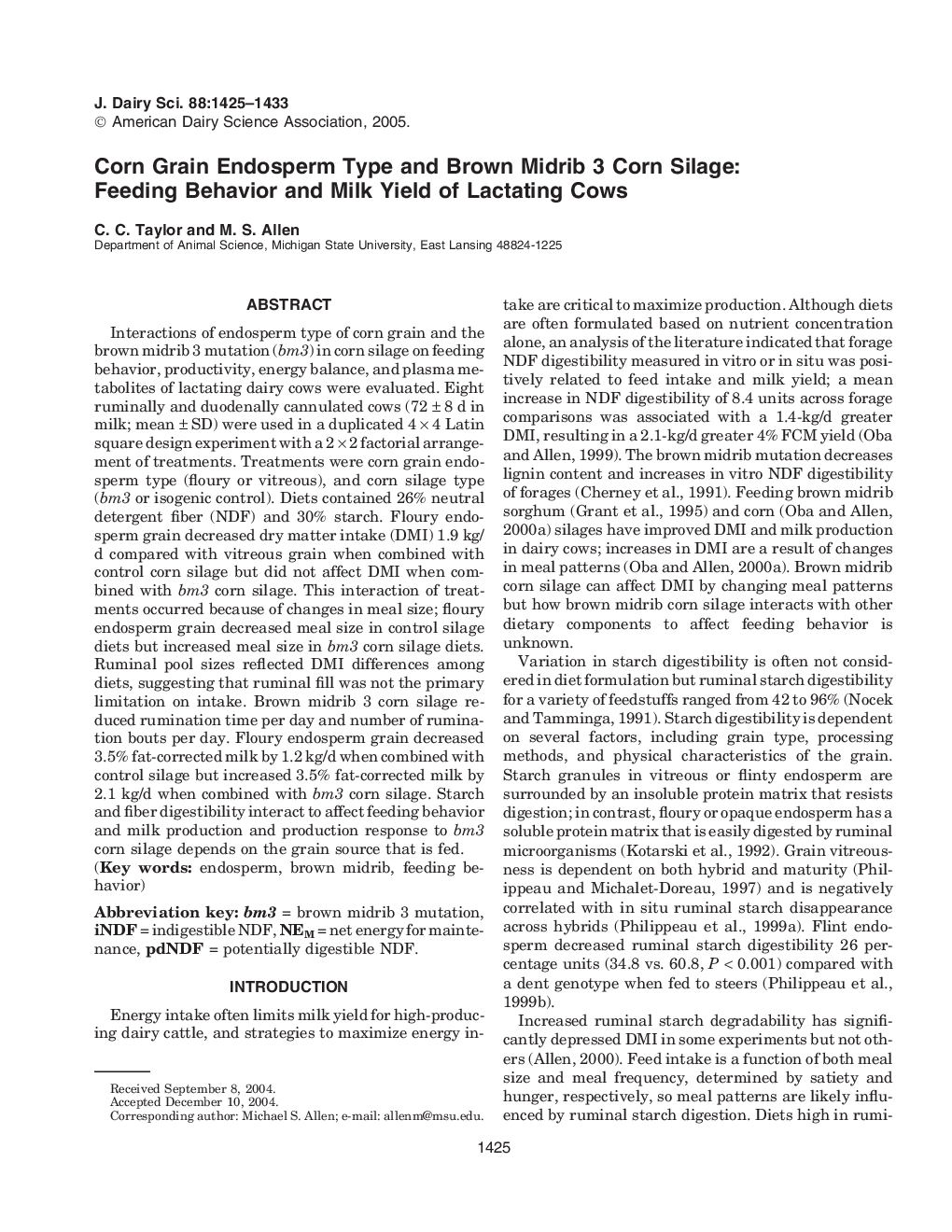| Article ID | Journal | Published Year | Pages | File Type |
|---|---|---|---|---|
| 8981223 | Journal of Dairy Science | 2005 | 9 Pages |
Abstract
Interactions of endosperm type of corn grain and the brown midrib 3 mutation (bm3) in corn silage on feeding behavior, productivity, energy balance, and plasma metabolites of lactating dairy cows were evaluated. Eight ruminally and duodenally cannulated cows (72 ± 8 d in milk; mean ± SD) were used in a duplicated 4 Ã 4 Latin square design experiment with a 2 Ã 2 factorial arrangement of treatments. Treatments were corn grain endosperm type (floury or vitreous), and corn silage type (bm3 or isogenic control). Diets contained 26% neutral detergent fiber (NDF) and 30% starch. Floury endosperm grain decreased dry matter intake (DMI) 1.9 kg/ d compared with vitreous grain when combined with control corn silage but did not affect DMI when combined with bm3 corn silage. This interaction of treatments occurred because of changes in meal size; floury endosperm grain decreased meal size in control silage diets but increased meal size in bm3 corn silage diets. Ruminal pool sizes reflected DMI differences among diets, suggesting that ruminal fill was not the primary limitation on intake. Brown midrib 3 corn silage reduced rumination time per day and number of rumination bouts per day. Floury endosperm grain decreased 3.5% fat-corrected milk by 1.2 kg/d when combined with control silage but increased 3.5% fat-corrected milk by 2.1 kg/d when combined with bm3 corn silage. Starch and fiber digestibility interact to affect feeding behavior and milk production and production response to bm3 corn silage depends on the grain source that is fed.
Related Topics
Life Sciences
Agricultural and Biological Sciences
Animal Science and Zoology
Authors
C.C. Taylor, M.S. Allen,
